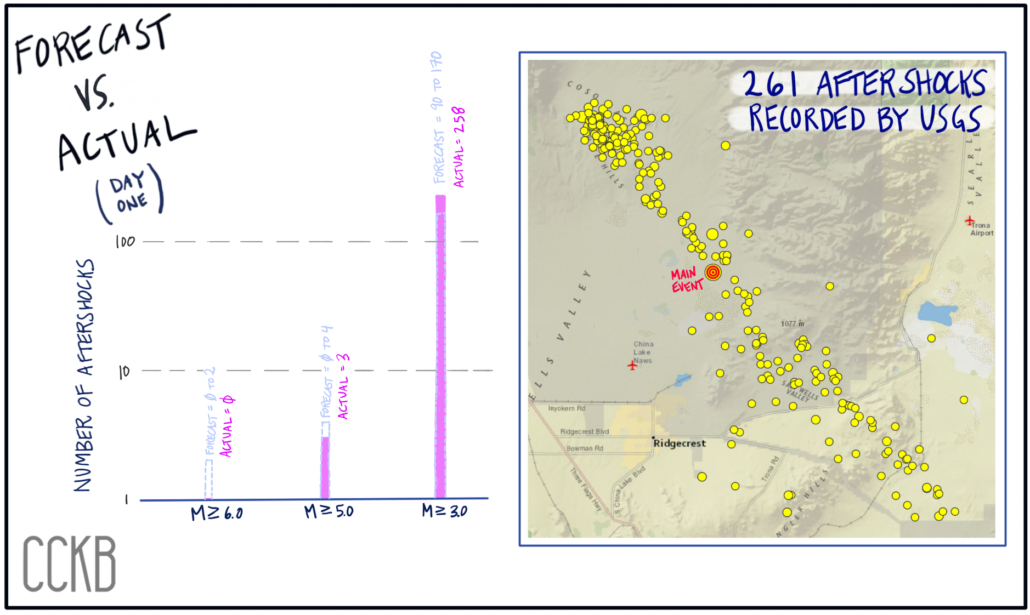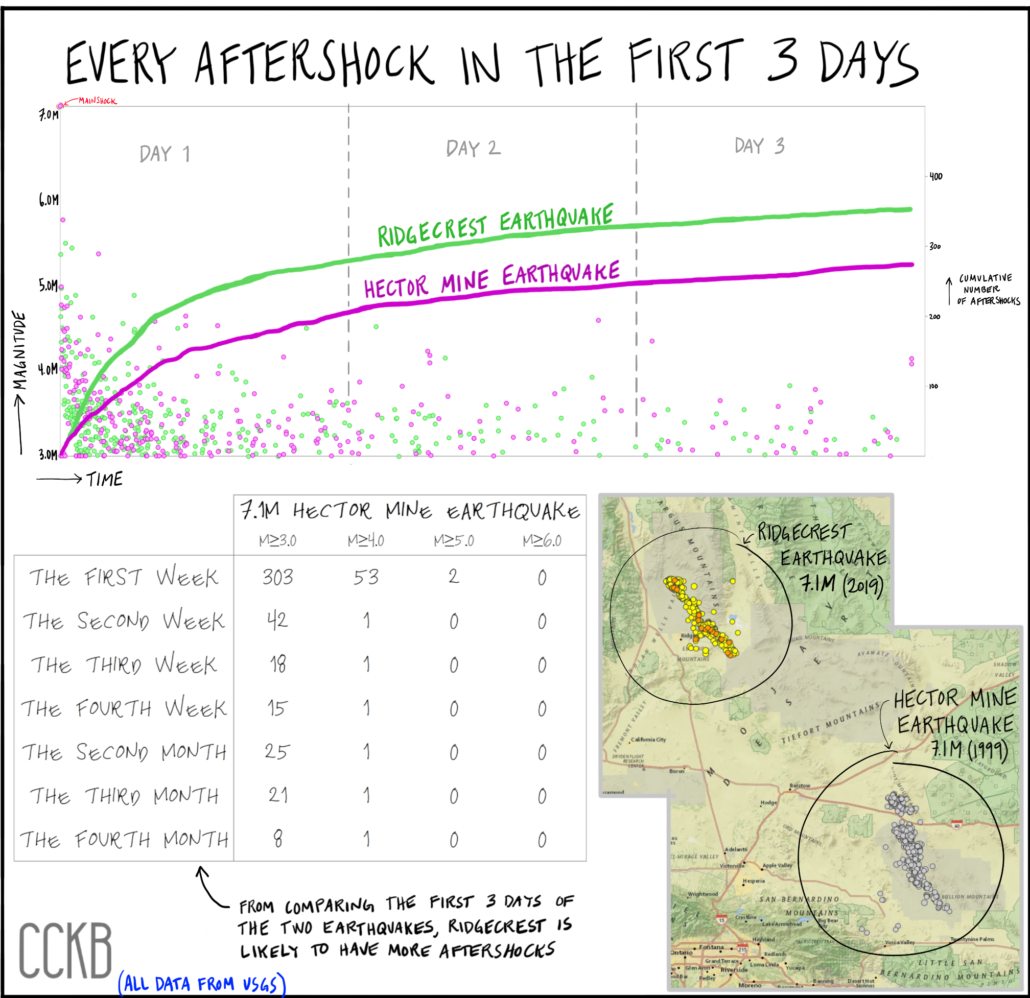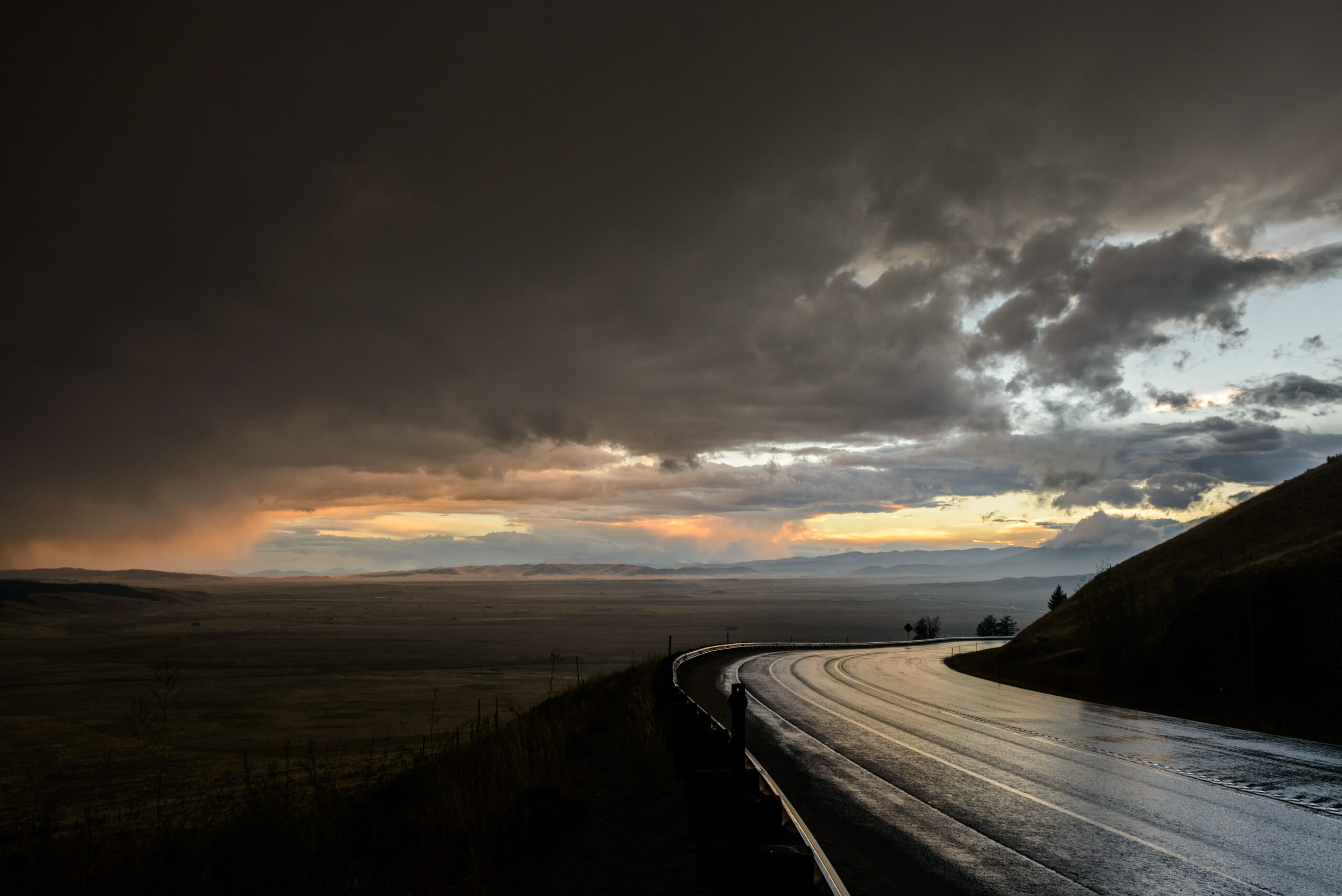A large earthquake just hit! Is this the mainshock or a foreshock or an aftershock? Nobody knows until the earthquake shaking starts again in the next day or week. Is another earthquake inevitable? Can the experts predict aftershocks?
Aftershock Forecasts
In a previous article, Can Earthquakes Be Predicted?, we described how scientists could not predict earthquakes. Scientists can only talk in broad probabilities when talking about main event earthquakes (a 60% chance of a 6.7 in the next 30 years, in the heavily populated Los Angeles Area). But do scientists know more about aftershocks than the main event earthquake? Yes! Mainshock earthquakes release much – but not all – of the built-up energy in the fault line. Any remaining energy gets released in aftershocks. In the days following a stress release, the fault is more likely than usual to slip again. Scientists have seen this occurrence time and time again. After a mainshock event, the fault has momentum and doesn’t fully come to rest right away. The fault takes a week or sometimes months to settle into a rest period.
Jumpstart fun fact: since aftershocks always happen, Jumpstart does not cover any additional earthquakes within one week of the mainshock; however, if two major earthquakes happen more than a week apart, there is the possibility of two payouts.
The rate of aftershocks is highest immediately after the earthquake, and decreases rapidly over time. Generally, the larger the mainshock, the greater the number of aftershocks, and the longer the period that aftershocks will continue. This is because, the larger the earthquake, the longer the distance that the fault slipped, so it has more momentum and takes longer to settle down.
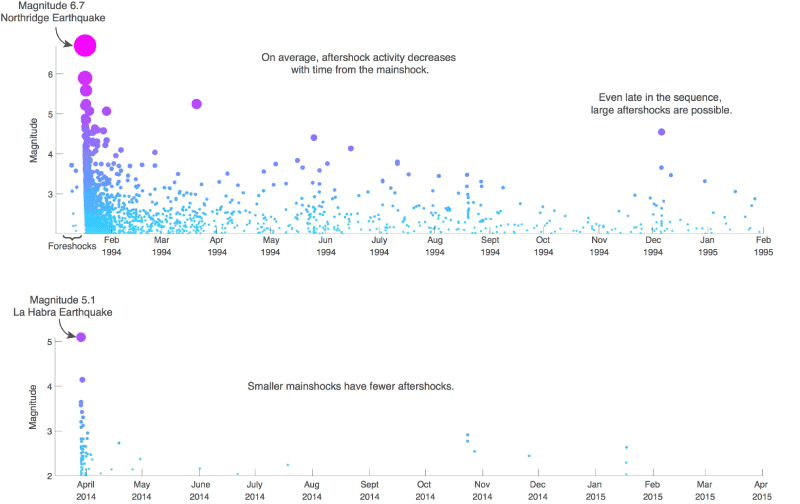
Major Earthquake in Southern California
The town of Ridgecrest, California, experienced a 6.4 Magnitude earthquake on July 4th, 2019. The United States Geological Survey (USGS) forecasted a 9% chance that a larger earthquake would follow, stating “While it is always possible for large quakes to trigger an even larger quake, most do not. It’s generally not possible to determine whether a given quake will turn out to be a “foreshock” of a larger one…”. Approximately 33 hours later, there was a 7.1 Magnitude earthquake, releasing 11 times more energy than the 6.4 Magnitude foreshock. Check out the new aftershock forecast in the USGS screenshot below. Over the next week, USGS reports a 3% chance of an earthquake greater than 7.0 Magnitude, 27% chance for greater than 6.0 Magnitude, and 96% chance for greater than 5.0 Magnitude.
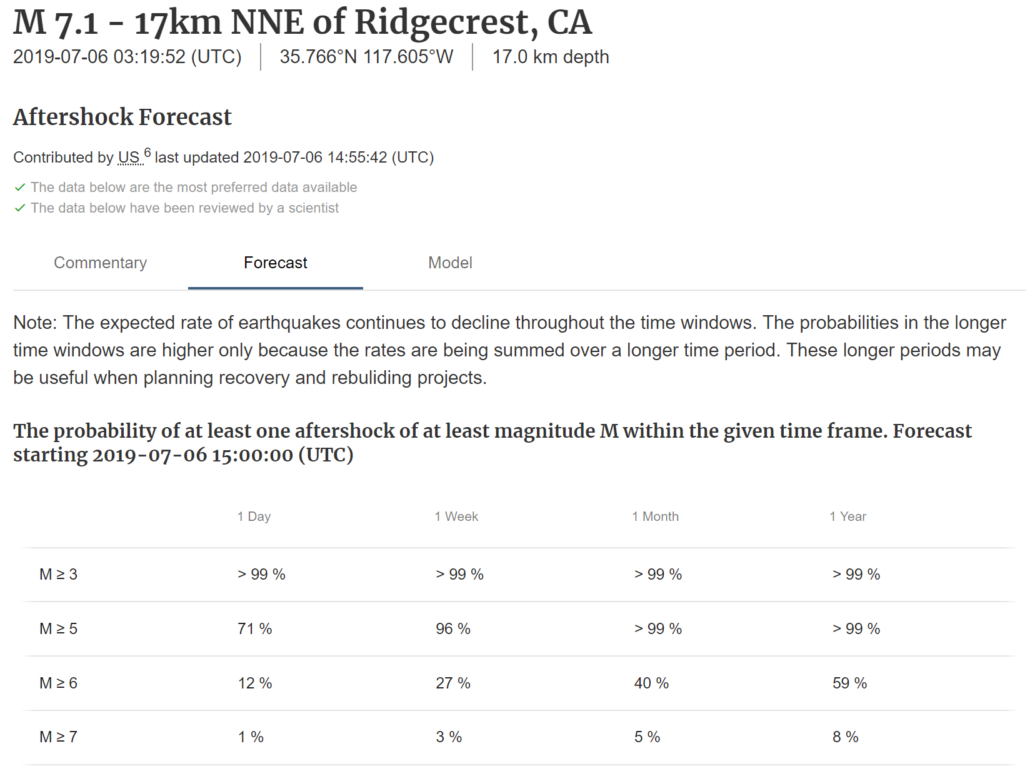
USGS develops every aftershock forecast, including the Ridgecrest aftershock forecast, based on statistical analysis. The forecast uses the Reasenberg-Jones (1989, 1994) model, an equation created with data from the behavior of California’s past earthquakes:
This “gold standard” model relies heavily on the magnitude of the mainshock so that USGS can communicate the forecast quickly to the public. See the graph below, comparing the Day 1 forecast to the actual aftershocks that occurred during the 24 hours following the main event earthquake (aftershocks lower than M3.0 were not considered).
Another model developed by Van der Elst and Page forecasts aftershocks by pattern-matching the mainshock and first few days of aftershocks with other similar earthquakes and their aftershocks. That analysis results in a similar forecast to the statistics-based Reasenberg-Jones model; however, it tends to forecast a higher number of aftershocks in comparison.
Let’s take a look at a similar past earthquake that occurred close by, the M7.1 Hector Mine earthquake in 1999. From this, we can see what Ridgecrest, California might expect to experience in the next few weeks and months. From comparing the first three days of aftershocks between these two events, we should expect more aftershocks from the Ridgecrest quake than we saw from the Hector Mine quake.
How Can I Prepare For The Next Earthquake?
You can use Ridgecrest as a reminder to prepare for the next big quake. Secure your TV, wall hangings, and furniture so that these items are less likely to fall and injure you. Talk with your family and friends to create a communications plan and meet-up plan. Assemble an emergency bag with gear (medicine, flashlights, cell phone charger, and more) and food and water that will last at least three days. Already finished all of this? Awesome! Try completing one of these suggestions each month to be even more prepared: Best Ways to Prepare for an Earthquake.
What Should I Do During An Earthquake?
Drop, cover, and hold on. Review FEMA’s advice on what to do depending on your location.
What Should I Do After An Earthquake?
Collect your emergency bag, follow your family’s emergency plans to meet up, and expect more shaking. Find a safe location: stay out of damaged buildings, and keep a distance from water heaters, gas valves, overhead power lines, brick chimneys, trees, and areas that are susceptible to floods from dam failure, landslides, soil liquefaction, and tsunami.

